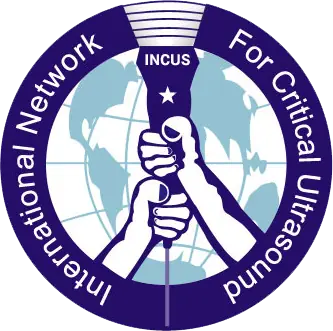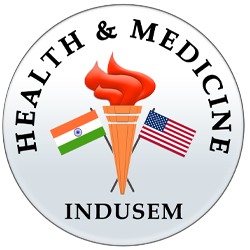Advanced Ultrasound In Trauma And Life Support Course

Care of critically ill and injured victim is challenging in pre-hospital, emergency department and intensive care settings. It becomes more difficult when you perform trauma resuscitation and advanced cardiac life support protocols in a blinded fashion. Point of care ultrasound has been typically described as an extension of the palpating hand and a “visual” stethoscope during the physical examination, providing both anatomic and functional information complementary to the routine physical examination.It is one of the core competencies in acute care as defined in the core competencies of acute caregivers.
Course Details
Target Group
Post graduate students
Emergency Medicine, Trauma Surgery, General Surgery, , Orthopedics, Anesthesia, Pediatrics, Medicine.
Duration of Course
1 day
Max number of participants
32 (Thirty Two) per batch
Instructor: Student ratio
1:8 (one instructor for eight students)
Certification
Participants will be awarded a certificate of participation.
Learning Objective
- Pre-course Evaluation &Introduction of students and Course Faculty
The participants will be assessed on knowledge and confidence before starting of the course. The participants and faculties are formally introducing each other in this session. - ABCDE by Ultrasound: Empowering trauma resuscitation
This topic gives an overview the role of point of care ultrasonography as an adjunct to trauma resuscitation- The ABCDE Way.
- BASICS OF ULTRASOUND: Didactic
Learning objective- Basic physics of ultrasound
- Handling the machine
- Image optimization by using
- Different knobs
Imaging modes
Gain & depth setting etc
- Different knobs
- Probe orientation
- Artifacts
- Recording and reporting of image/video.
- Airway Ultrasound: Didactic
Learning objective - Ultrasound anatomy of airway
- Ultrasound detection of Tracheal injuries
- Threatened airway
- Definitive Airway confirmation, USG guided Procedures- Needle cricothyroidotomy,Tracheostomy.
- Lung Ultrasound: Didactic
Learning Objective- Method of lung ultrasound
- Ultrasound lung signs
- Detection of Pneumothorax
- Detection of Hemothorax &lung contusion
- Detection of Sternal fractures and diaphragmatic injury.
- Skill Station: Knobology, Airway, Breathing[60 min] 4-skill stations
- The participants will be provided ultrasound machine and healthy volunteer model to practice.
- The participants will learn and individually demonstrate
- AIRWAY (Tracheal and laryngeal structure)
Thyroid cartilage, Vocal cords, Cricoids cartilage, Cricothyroid membrane, Tracheal ring, Airline, Concept of Tracheal deviationesophagus - BREATHING
Bat sign, Pleural line, Lung sliding, B lines, M mode- Seashore sign, Diaphragm movement
- Extended FAST: Didactic
Learning Objective- FAST (subxiphoid, right upper quadrant, left upper quadrant and suprapubic view)
- E-FAST
- Volume assessment: IVC assessment: Didactic
- Method of Inferior vena cava (IVC) ultrasound
- IVC diameter measurement
- Correlation with volume status of patient. Video demonstration of hypovolemic, dilated and normal IVC.
- Skill Station:E-FAST-IVC [45 min]&Goal Directed ECHO [45 min]
The participants will learn and individually demonstrate- Different FAST windows (subxiphoid, right upper quadrant, left upper quadrant and suprapubic view)
- ECHO windows: Subxiphoid, Parasternal long & Short axis & Apical 4-Camber view.
- Four skill stations: Two for E-FAST-IVC & Two for Goal Directed ECHO after 45 min the groups will swap.
- Disability Assessment: Didactic Ultrasound assessment of pupillary size and reaction, Detection of scalp fracture, Optic nerve sheath diameter and its use for assessment of raised intra-cranial pressure.
- Secondary Survey: Didactic
Concept of head to toe examination to assess non-life threatening injuries. Ultrasound detection of fracture, Muscle tear, Ocular injury & foreign body - Post-course Evaluation: The participants will be assessed for knowledge and confidence
- Ultrasound guided CPR: Objective of this topic is to discuss potential use of ultrasound during CPR especially in Trauma Setting
- Course closure
| ADVANCED ULTRASOUND IN TRAUMA AND LIFE SUPPORT COURSE | ||||
| 7.30 AM | REGISTRATION | |||
| 8.00-8.15 AM | Pre-Test | |||
| INTRODUCTION | 8.15-8.30AM | ABCDE BY ULTRASOUND: EMPOWERING TRAUMA RESUSCITATION | ||
| 8.30-9.10 AM | BASICS OF ULTRASOUND,KNOBOLOGY | |||
| AIRWAY | 9.10-9.50 AM | AIRWAY: Ultrasound Anatomy Tracheal injuries, Threatened airway Airway confirmation Procedures- Needle Crico-thyroidotomy,Tracheostomy |
||
| BREATHING | 9.50-10.30 AM | BREATHING ASSESSMENT: Pneumothorax, Hemothorax, Lung contusion, sternal fracture, Pneumonia, Diaphragm injury. |
||
| 10.30-10.45 AM | TEA BREAK | |||
| 10.45-11.45AM | US HANDS-ON & SIMULATION: ALL FACULTY Knobology, Airway, Breathing |
|||
| CIRCULATION | 11.45AM -12.00 PM | RUSH PROTOCOL THE PUMP- Focussed Cardiac Ultrasound in Trauma |
||
| 12.00-12.30 PM | RUSH PROTOCOL THE TANK- E-FAST , IVC |
|||
| 12.30-1.30PM | Lunch | |||
| 1.30-3.00 PM | US HANDS-ON &SIMULATION:E-FAST & IVC , FOCUSSD ECHO | |||
| DIASBILITY | 3.00-3.30 PM | Disability Assessment: Pupil assessment, Skull fracture Non-Invasive ICP(Optic Nerve Sheath Diameter), Midline shift |
||
| SECONDARY SURVEY | 3.30-4.00 PM | Concepts on Head-to-Toes Secondary Management & Monitoring: Fracture Detection, Nerve Block, CVP insertion, ocular injury, Foreign body |
||
| 4.00-4.30 PM | Post-Test | |||
| 4.30-5.30PM | Ultrasound Guided CPR | |||
| 5.30 ONWARDS | CERTIFICATION Followed By High Tea | |||



